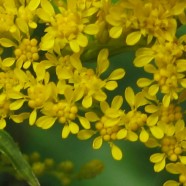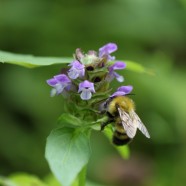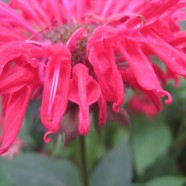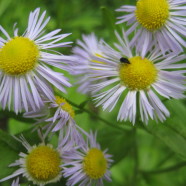Dandelion: Sparkling Wine
Dandelion wine. “The words were summer on the tongue. The wine was summer caught and stoppered.” Ray Bradbury, the great science fiction writer, was a man who knew how to appreciate summer. And he really knew how to appreciate dandelions:”A pride of lions on the lawn.” To make dandelion wine, you need the full-blown blossoms. What’s more, you have to harvest the flowers when they’re open. Since dandelion flowers close up tight on cloudy or rainy days, you have no choice but to wait for sunshine. All recipes for dandelion wine agree that you have to pick...
Read MoreWinter Gold: Witch Hazel
My hands have never been so cold. I’m wearing gloves but they’re too thin, and the wind is howling. It’s what they used to call a lazy wind–it goes right through you instead of taking the trouble to go around. The skyscrapers of New York City make canyons for the wind to flow through like a bitter river. Cold gusts are slipping icy fingers down the back of my neck. Central Park is full of trees, but there’s nary a leaf anywhere to be seen (not counting pine needles). You wouldn’t think anything would be flowering now, in the darkest days of December. And...
Read MoreGoldenrod Safari
A hungry predator crawls through a leafy jungle. Slow cautious movements make no sound. The well-camouflaged predator waits, motionless. Powerful forelegs stretch wide to grab its unwary prey. Beware the goldenrod jungle! A single goldenrod plant is a complex habitat, the leaves, stems, and flowers providing food and shelter for a bewildering variety of strange, hidden creatures. Each goldenrod plant has thousands of tiny blossoms crammed together, their nectar providing a vital late-summer source of nutrition for butterflies, moths and bees. Take a safari along the length of a goldenrod...
Read MoreHeal-All: First Aid Kit
Heal-all is a hardy, ubiquitous little wildflower–in fact, it’s found all over the world in temperate zones. On a mowed lawn it will flower at two inches high, though it can get knee-high in a meadow. The square stem and opposite leaves show that it’s in the mint family, though with no minty smell. A humble little plant, easy to overlook. But it’s often noticed by bumblebees–the short, strong stems and stubby flower heads are a handy perch for the portly insects, who need stalwart flowers to support their weight. Bumblebees are important plant pollinators whose...
Read MoreBee Balm, Year Two
Last summer I decided to attempt a thing I rarely do–garden. For a person who is obsessed with plants, I have the very antithesis of a green thumb. If my family had to live on the proceeds of my vegetable garden, we’d all lose a lot of weight. This year I have harvested to date exactly eleven string beans, a summer squash, and one tomato the size (and taste) of a golf ball. I’m the only person I know who can kill zucchini. It’s no better in the flower garden. I routinely murder rose bushes, assassinate peonies, and cause tulips and begonias to commit suicide. This is...
Read MoreDaisy Fleabane: Does It Get Rid of Fleas?
Well, no. Unfortunately this is a classic case of false advertising. This plant, called daisy fleabane (Erigeron annuus), is neither a daisy nor the bane of fleas. It’s a nice little meadow flower–one of the few native plants that can elbow its way in between more aggressive non-native clovers and daylilies along roads and byways. It isn’t the same as a daisy, and it isn’t an aster, although they’re all related–all those plants with a fringe of white rays around a yellow center are cousins in the enormous Aster family. Regular daisies (ox-eye daisies, as...
Read More










Recent Comments